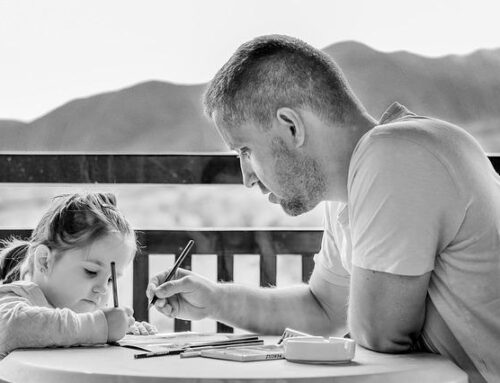In my previous post, I mentioned a type of therapeutic style called Dialectical Behavioral Therapy (affectionately called DBT for short, so let’s go with that). But what exactly is it? Well, brevity isn’t exactly my strong suit, so let’s start at the beginning. DBT was first brought into the realm of mainstream therapy in the 1980s. Looking back on an almost 30-year history for a type of mental health treatment may make it seem ancient. How can something that was developed so long ago help me now? It has to be obsolete by now. Well before we have a funeral for it, let me give a tiny bit of perspective. Cognitive Behavioral Therapy (CBT), which is another style of talk therapy was developed throughout the early to mid-1900s and is very VERY widely used today. But CBT isn’t even the beginning, Freud was putting together his thoughts on talk therapy since the late 1800s. So in this context DBT is kind of the new kid on the block.
That’s all fine and well but what’s it all about? Well, let’s start by explaining a dialectic (not to be confused with a dialect). A dialectic is basically when there are two (or sometimes more), often conflicting, opinions about something that seems like they can’t come together. However, DBT’s philosophy is that many times, these conflicting parts can come together to make sense as a whole. Now is probably a good time to throw in an example. Have you ever loved someone? And has there ever been a time when that person made you angrier than you ever thought they could? Well, these two emotions seem like they conflict, right? How can love and anger towards the same person occupy the same space in your head? If you’re human like me, you may have a tendency to react based on whichever emotions feels strongest at the time (i.e. anger results in yelling, love results in affection and affirmation), but DBT acknowledges that both of these conflicting emotions can be present at the same time. It brings important awareness to the thoughts you’re thinking and the feelings you’re feeling. The caveat is that DBT asks you to remove the self-imposed judgments from thoughts and feelings and acknowledges them as neutral. DBT tries to bring a sense of normalcy to the extremely complex, at seemingly contradictory, range of emotions that people are capable of experiencing.
Before I wrap up this introduction to DBT, I want to touch on the four core skills that it emphasizes. The first three are Interpersonal Effectiveness, Emotional Regulation, and Distress tolerance, all of which are important. However, the foundation of DBT really relies on the fourth skill, which is a term you’ve likely heard thrown around in pop culture. It’s the idea of “Mindfulness.” I think that when discussing DBT’s therapeutic value, we have to use the concept of mindfulness as a springboard to the rest of the skills.
As I close up here and leave you to ponder if DBT’s style resonates with you so far, I’d like to express one more view that both DBT and I share. This concept of non-judgementalness that DBT puts forth, includes not judging your emotions as “good or bad,” but instead viewing them as “comfortable or uncomfortable.” In the future, I would like to go into more detail with the re-framing of emotions and acknowledging the purposes they serve.





Very nice article, exactly what I needed. Very useful post I really appreciate thanks for sharing such a nice post. Thanks